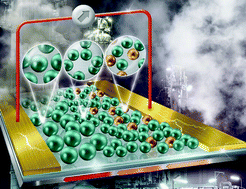A review of low-temperature H2S gas sensors: fabrication and mechanism
Abstract
Detection of toxic gases such as hydrogen sulfide (H2S) at low temperatures is of high importance as it reduces power consumption, increases long-term stability, and lowers the danger of explosion in the presence of flammable gases. Among different gas sensors, chemiresistive metal oxide semiconductors sensors are the most popular type due to their low cost, high sensitivity, compact size, ease of use, and high thermal and mechanical stability. However, these sensors generally require a high operating temperature (>100 °C), attributed to their insufficient surface area. Hence, their pristine bulk structures cannot meet the requirements of low-temperature gas sensing. To overcome these limitations, the bulk structure of metal oxide sensors can be modified either geometrically or chemically. Herein, we comprehensively reviewed a wide range of metal oxide-based sensors for low-temperature H2S gas sensing. We highlighted the recent advances in the modifications of these sensors for enhanced gas sensing properties, such as high selectivity/sensitivity and fast response/recovery time.

- This article is part of the themed collection: 2021 Focus and Perspective articles


 Please wait while we load your content...
Please wait while we load your content...